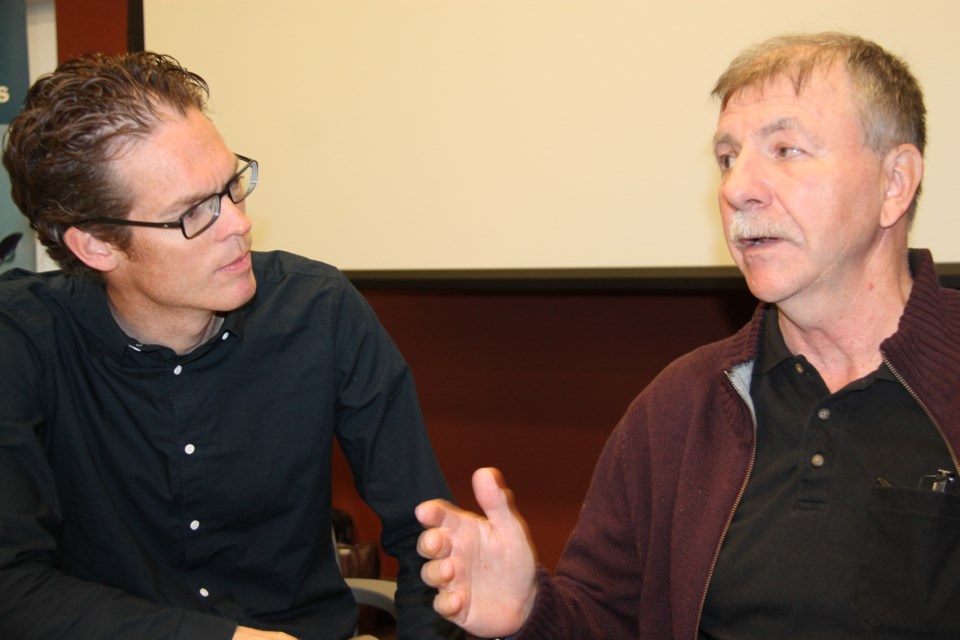The Sault's John Luszka credits a recently-expanded program with helping him in his ongoing recovery from a major stroke he suffered March 20, 2015.
The stroke led to a five-month hospital stay.
Since then, Luszka has been helped by the Post-Stroke Transitional Care Program, which includes a stroke navigator and support services delivered by the Northern Ontario Independent Living Association (NILA) and its Sault partner, the March of Dimes.
A stroke navigator (or community navigator) works with stroke survivors and their caregivers in helping the survivor transition back to life in the community after being discharged from hospital.
Between 2012 and 2015, a study was led by the Northeastern Ontario Stroke Network involving over 250 participants and over 100 stroke survivors.
It found that with the help of a community navigator, stroke patients had significant improvement in their Return to Normal Living Index (RNLI) compared to patients without the services of a navigator.
Since 2011, the Post-Stroke Transitional Care Program has expanded beyond Sudbury to other Northern communities, including the Sault, North Bay, Timmins, Temiskaming Shores and Parry Sound, thanks to $1.2 million in additional funding from the Northeast LHIN.
From April 2015 to March 2016, the program, administered in the Sault by the March of Dimes, has served 76 local people with over 600 navigator visits and over 1,700 rehabilitation sessions.
"At the conclusion of my hospital care my wife Heather was visited personally by the March of Dimes post stroke community navigator…to discuss the services available through the program," Luszka told an audience which gathered to celebrate the Community Navigator program's success at Sault Area Hospital's auditorium Thursday.
"The Community Care Access Centre visited our home to determine how our home environment would be suitable to my needs at that time. Recommendations were provided to make modifications to facilitate safe improvements in our day-to-day living."
"It should be understood my mobility was very limited post-hospital release and there was a high risk of serious injury from potential falls," Luszka said.
Through the navigator program, Luszka started visiting the March of Dimes for a recovery program twice a week, consisting of a series of mobility exercises, and has continued to work out in a gym in his home.
Gains in his mobility have been noticeable.
Luszka's speech is perfectly clear, and he is able to walk with a cane, also regaining arm mobility over the past few weeks.
"A stroke not only affects the individual but the whole family," said Luszka, who has maintained a positive attitude and sense of humour.
Luszka thanked the March of Dimes for "thinking outside the box" in his ongoing recovery.
Caregivers may refer stroke survivors to support and services offered by the navigator program themselves or through a physician, said Talia Papi-Grant, March of Dimes stroke community navigator and a Registered Practical Nurse, speaking to SooToday.
"There's not a really long waiting list actually, we get individuals in very quickly, what they do have to do first is complete their outpatient therapy first, at the hospital or the Community Care Access Centre," Papi-Grant said.
"Once they've completed their outpatient therapy they can come to us…our wait list is a few short weeks, a couple of months at the very most."
The March of Dimes has an occupational therapist and physiotherapist on board to help develop individualized programs for stroke-surviving patients.
"With our program it's phenomenal because we can take on individuals for physical and cognitive needs with peer support and we don't have a discharge date, if they are still making gains they are welcome to stay with us and access our programs, we don't say 'it's been 12 weeks, the program's over.'"
"We think outside the box, just like John said."
"I have witnessed individuals being able to move from wheelchair to walking without assistive devices, returning to drive, riding a bike again, travelling, and to an extra heartwarming day with their daughter on their wedding day and holding a grandchild for the first time."
Post-stroke gym facilities and one-on-one physical or cognitive therapy sessions are available at the March of Dimes office at 550 Queen Street West, Suite 103.
The program also offers aquafitness sessions once a week at the John Rhodes Centre pool, if so desired.
In addition, the program offers a fully accessible, two-bedroom transitional unit on Old Garden River Road which recovering stroke patients can use if they do not feel quite ready to go home after being discharged from hospital.
For more information on the program, call the March of Dimes Canada Sault office at 705-945-1044.
